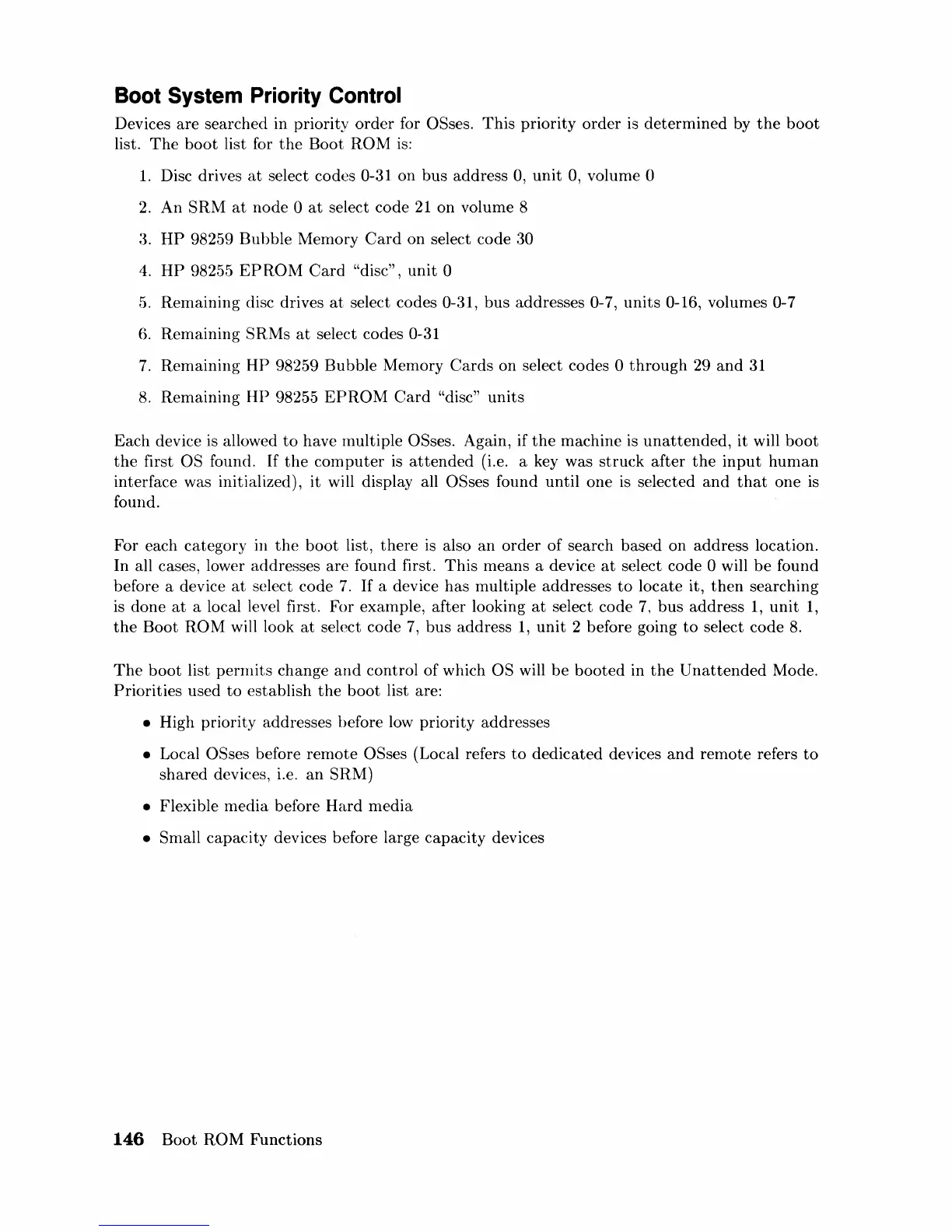Boot System Priority Control
Devices are searched in priority
order
for
aSses.
This
priority
order
is
determined
by
the
boot
list.
The
boot
list for
the
Boot
ROM
is:
1.
Disc drives
at
select codes 0-31 on
bus
address 0,
unit
0, volume 0
2.
An
SRM
at
node 0
at
select code
21
on volume 8
:t
HP
98259
Bubble
Memory
Card
on select code 30
4.
HP
98255
EPROM
Card
"disc",
unit
0
5.
Remaining disc drives
at
select codes 0-31, bus addresses 0-7,
units
0-16, volumes 0-7
().
Remaining SRMs
at
select codes 0-31
7.
Remaining
HP
98259
Bubble
Memory
Cards
on select codes 0
through
29
and
31
8.
Remaining
HP
98255
EPROM
Card
"disc"
units
Each device is allowed
to
have rnultiple
aSses.
Again, if
the
machine
is
unattended,
it will
boot
the
first
as
found.
If
the
computer
is
attended
(i.e. a key was
struck
after
the
input
human
interface was initialized), it will display all
aSses
found until one
is
selected
and
that
one is
found.
For each category in
the
boot
list,
there
is also
an
order
of
search based on address location.
In all cases, lower addresses
are
found first.
This
means a device
at
select code 0 will
be
found
before a device
at
select code
7.
If
a device has multiple addresses
to
locate it,
then
searching
is done
at
a local level first. For example, after looking
at
select code
7,
bus
address
1,
unit
1,
the
Boot
ROM
will look
at
select code
7,
bus address
1,
unit
2 before going
to
select code
8.
The
boot
list
pennits
change
and
control
of
which
as
will
be
booted
in
the
Unattended
Mode.
Priorities used
to
establish
the
boot
list are:
• High priority addresses before low priority addresses
• Local
aSses
before
remote
aSses
(Local refers
to
dedicated
devices
and
remote refers
to
shared
devices, i.e.
an
SRM)
•
Flexible
media
before
Hard
media
• Small capacity devices before large capacity devices
146
Boot
ROM
Functions

